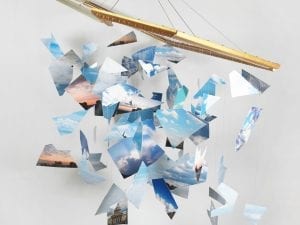At the recent opening of the 8th Asia Pacific Triennial in Brisbane, Australia, (APT8) immersive installations placed a premium on first hand encounters with works of art. Showcased at the Queensland Art Gallery, (QAG) and Gallery of Modern Art (GOMA), works from South Asia, Southeast Asia, Central Asia, Australia and the Middle East addressed issues of identity, history, and colonisation through engrossing environments that offered transformative experiences for the viewer and redefined the process of viewing and understanding art.
At the QAG, exiled Iranian brothers Rokni and Ramin Haerizadeh, and their collaborator Hesam Rahmanian recreated their studio from Dubai where they reside. In the manner of llya Kabokov’s full blown installations that the art historian Claire Bishop refers to as a “theatrical mise-en-scene,” their signature black and white painted floor set the stage for large paintings, videos that lampoon and subvert power in the Middle East, works by others artists such as Martha Wilson in their collection, and large scale mixed media sculptures and assemblages devised from knick-knacks. As the viewer perused the space, one became completely engaged by the trio’s mutating identity through their theatrical display of various projects. Their ethos of constant improvisation and change was reflected in the open-ended work-in-progress ambiance in the gallery, which eliminated the idea of presenting a finished product.
Viewer participation in the New Zealander Rosanna Raymond’s installation SaVAge K’lub at GOMA, named after a Victorian gentleman’s club of the same name in London, recalled the French art historian Nicholas Bourriaud’s idea of Relational Aesthetics. Cabinets filled with Aboriginal artifacts, sculptures, and hung woven textiles created a salon for a community of Aboriginal artists gathered to generate a spirit of camaraderie and cheer. For these artists, the notion of reclaiming suppressed identity in an interactive, supportive environment resistant to closure forged what Bourriaud refers to as “microtopias.” That is, the SaVAge K’lub became a location for immediate gratification, leisure, and entertainment. Whether one can call this experience art is debatable, but in the spirit of Rirkrit Tiravanija’s communal engagement that became famous in the 1990s, Raymond’s installation and the viewer’s ability to engage with the artists brought Aboriginal identity and their presence to the fore.
For the Indian artist Asim Waqif who is trained as an architect, his large-scale public intervention addressed an interest in creating interactive work and reimagining forgotten memories. Strongly opposed to the idea of displaying objects meant only for viewing in museums, All we leave behind are the memories, 2015, was a large, ambitious, three-dimensional Mondrainesque sculpture that occupied an entire corridor at GOMA. Constructed from lengthy discarded pieces of timber sourced from a demolition company in Brisbane, the geometric jungle gym fitted with motion detectors and censors generated sounds, as viewers climbed onto the rough textured wood and partook of castaway associations from materials of previous homes.
Immersion came in the form of entering a dark, secluded and cavernous setting for Nicolas Mole and the Yumi Danis (We Dance) Group’s installation they look at you, 2014. Based on the beliefs and practices of the indigenous peoples of the ethnogeographic group of Pacific Islands known as Melanesia, woven floor mats, barefoot viewers and large wall-sized screens fitted around the room prepared the setting for the animated video projections of life and performances from their region. Images of black and white drawings of shrubs, trees, and forests formed the backdrop for a red darting fish, animals, spirits, and animated prototypes of pre-historic naked men and women that appeared, fraternised, and disappeared. Created as a celebration of this indigenous culture, the slow moving, changing scenes in the forest that dated back to our amphibious origins were accompanied by sounds of music and dance. Ultimately lit in luminous primary colours, this stirring installation reawakened the glory of untainted civilisations that still exist in the world today.
Viewed collectively, the notion of restoring identity from historical suppression, or the total disregard for memories in Waqif’s installation, is paramount to their practice. These artists, amongst many others at the APT8, devised innovative methods and aesthetics that represented specific regional concerns with universal applicability. Like the six-channel video installation A New Silk Road: Algorithm of Survival and Hope by Kazakh artists Gulnara Kasmalieva and Muratbek Djumaliev that portrayed the yearning for tradition in a fast changing, post-colonised Central Asian landscape, the immersive installations combined history with the relationship between globalisation and local identity.
Bansie Vasvani
Asia Pacific Triennial of Contemporary Art, until 10 April, Queensland Art Gallery, Brisbane.
For more information, visit www.qagoma.qld.gov.au.
Follow us on Twitter @AestheticaMag for the latest news in contemporary art and culture.
Credits
1. Rosanna Raymond, SaVAge K’lub, 2010. Installation view at APT8 courtesy of Bansie Vasvani.





